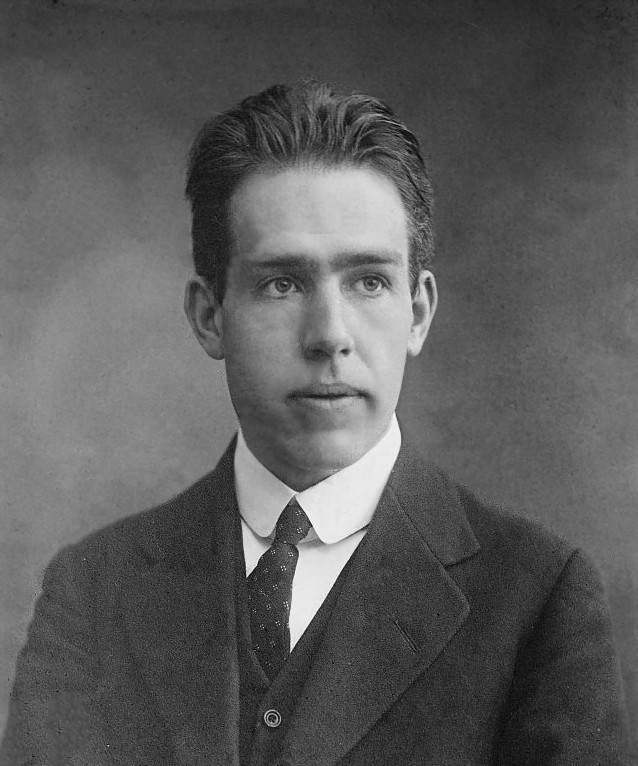Niels Bohr (1885-1962) was a Danish physicist and winner of the 1922 Nobel Prize in Physics.
Bohr began his work on the Manhattan Project after fleeing to Sweden from Denmark because of German occupation in 1943. Originally he was brought to London, working with the British Tube Alloys nuclear weapons development team. Bohr was eventually brought to the United States, and worked at Los Alamos under the pseudonym Nicholas Baker, as a knowledgeable consultant.
He flew back and forth between London, Washington, and Los Alamos for the next two years. Both during and after the Manhattan Project, Bohr supported peaceful applications of atomic energy and openness between nations with regard to nuclear weapons.
Scientific Contributions
Bohr travelled to England in 1911 to work with J.J. Thomson at the Cavendish Laboratory, but failed to impress him with his experiments, though he received an invitation for post-doctoral work with Ernest Rutherford. He adapted Rutherford’s nuclear structure to Max Planck’s quantum theory and created the Bohr model, the most widely accepted model of the atom. In 1922, Bohr was awarded the Nobel Prize in Physics for his research and contributions on the structure of an atom. For more information on his scientific research and achievements, visit the Nobel Prize Website.
1885 Oct 7th Born in Copenhagen, Denmark.
1903 Entered the University of Copenhagen and came under the guidance of Professor C. Christiansen.
1908 Won a prize from the Academy of Sciences in Copenhagen for solving the scientific problem of surface tension by means of oscillating fluid jets, and his paper was published in the Transactions of the Royal Society.
1909 Earned his Master’s degree in Physics.
1911 Received his Ph.D. from the University of Copenhagen.
1911 Traveled to England to work with J.J. Thomson at the Cavendish Laboratory.
1913 Returned to the University of Copenhagen to work as a docent.
19131914 Held a Lectureship in Physics at Copenhagen University.
19141916 Lectureship at Victoria University in Manchester.
1916 Appointed Professor of Theoretical Physics at Copenhagen University.
19201962 Head of the Institute for Theoretical Physics, established for him at the University of Copenhagen.
1943 Fled from Denmark to Sweden because of the Nazi occupation.
19431945 Worked on the Manhattan Project.
1950 Sent a letter to the United Nations calling for an “open world” freely sharing scientific and technical information.
1955 Organized the first Atoms for Peace Conference in Geneva, Switzerland.
1945 President of the Royal Danish Academy of Sciences.
1947 Was awarded the Order of the Elephant from Frederick IX.
1962 Nov 18th Died in Copenhagen, Denmark.





